Many towns have established a tradition of naming streets after their mayors, and Masterton is no exception – there are 17 streets in Masterton that commemorate various mayors. The pattern is not, however, consistent, as several of the town’s mayors do not have streets named after them, including early ones. These mayors are listed at the end of this section.
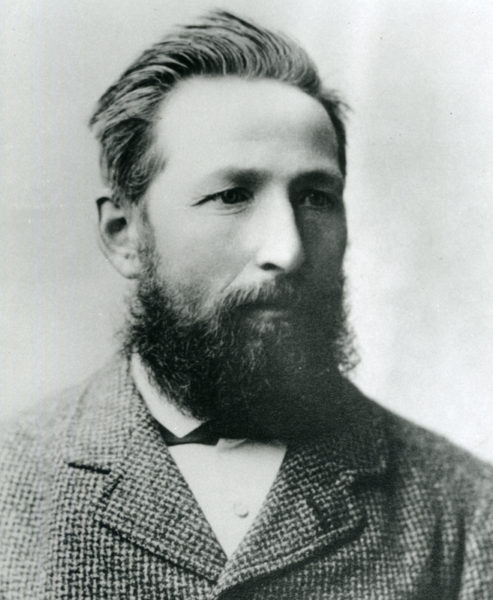
McGregor Crescent
Masterton’s second mayor, Duncan McGregor, mayor from 1878-1879, was the first to have a street named after him. McGregor was one of three brothers who settled in the Masterton area, James and Duncan joining their brother Robert after a spell in the Victorian goldfields. The brothers established themselves as millers, operating a saw pit first, then building a sawmill at Solway.
Duncan was a strong man, and heavily involved in local politics. He served just one term as mayor, although he also spent many years as County Chairman.
Pic: Duncan McGregor served on both the county and borough councils.
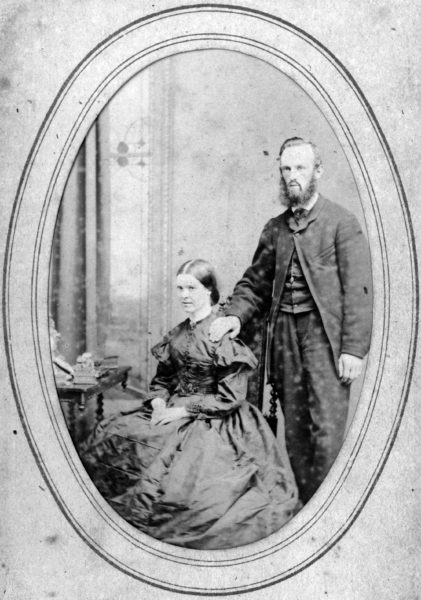
Edwin Feist Place
During the early years of the Masterton Borough there were a number of short term mayors, each of the first three serving only one term. The third mayor was the businessman Edwin Feist from 1879-80. Feist, who was born in Sussex, England, came to New Zealand in 1865 and ran a successful grocery business in Masterton. He served on a large number of public institutions – the Borough Council, the Trust Lands Trust, the Park Trust, the Cemetery Trust and the School Committee. He died in 1920.
Pic: Edwin and Catherine Feist.
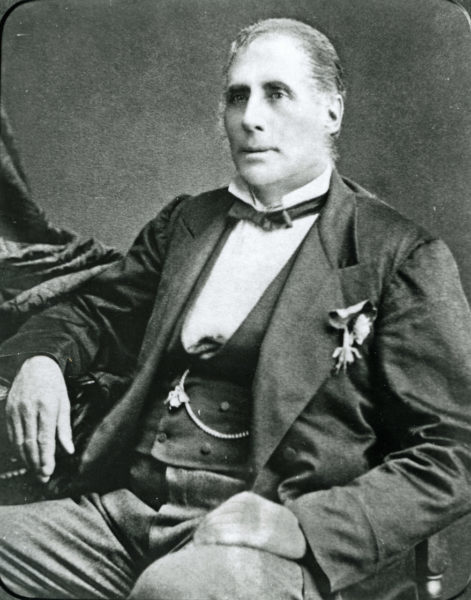
Renall Street
Masterton’s fourth mayor was the colourful A.W. Renall -miller and politician.
Renall was born in Heybridge, Essex and came to Wellington in 1840. A trained carpenter, He served as coffin maker to the fledgling town, making coffins for Te Wharepouri and other chiefs of Wellington.
He owned and operated a flourmill at Taita until coming to Masterton in the late 1850s. Renall was a born politician. He loved the thrust of debate, and was vigorous in defence of the Liberal views he so passionately held. He served as a Member of Parliament, as a two-time mayor of Masterton (1880-1,1887-9) and on a wide variety of other public bodies in Masterton.
His son, Joseph, was also to serve a term as mayor, from 1904-07. A farmer from Te Whiti, he shared his father’s love of straight talking, and during his mayoralty there were some heated exchanges in the debating chamber. He left Masterton in 1907, and died in 1921. No street is named in commemoration of Joseph Renall.
Pic: Alfred Renall, politician and businessman.
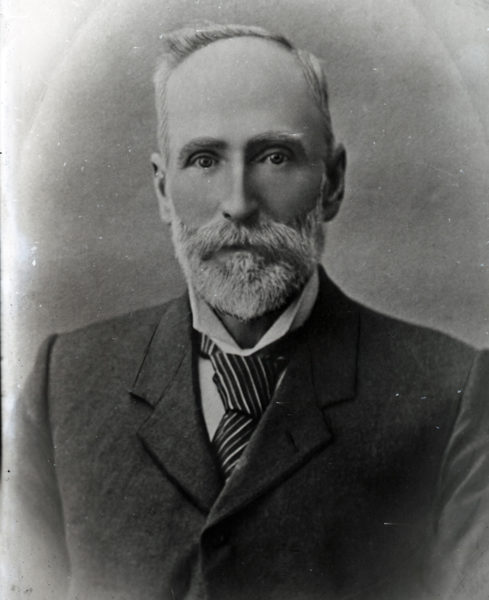
Lowes Place
The sixth person to hold the Masterton mayoralty was William Lowes, partner in the auctioneering firm of Lowes and lorns. Lowes was born in Northumberland and came to New Zealand in 1865, setting up in business in Wellington as an importer of saddlery. He succeeded very well, and was able to buy a number of farms in Wairarapa.
In Masterton he served on a great number of public bodies. His mayoralty lasted from 1883-84.
Lowes built a large house, Stoneycroft, on the corner of High Street and Intermediate Street.
The naming of Lowes Place, when the land off Intermediate Street was subdivided in 1975, caused some anguish to the developers who obviously thought the name inappropriate. In a letter to the Council they expressed the desire to have the street named Ascot Place. The Council confirmed their decision to name the street after the mayor who had in fact owned the land at one time.
Pic: William Lowes is commemorated in Lowes Place, situated just where he lived in High Sstreet.
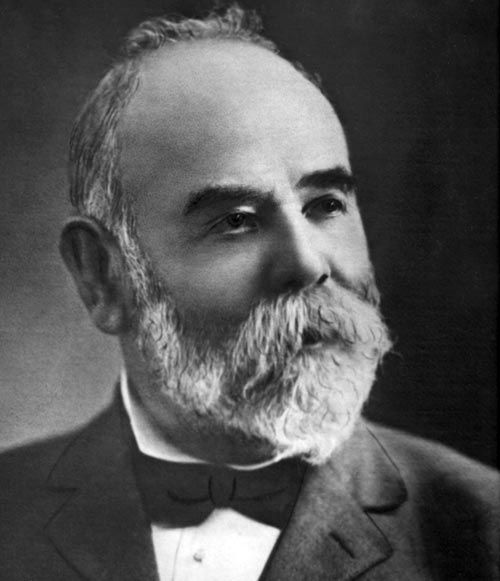
Casel Street
In 1884, William Lowes was succeeded in the mayoralty by one of the town’s most successful businessmen, Myer Caselberg. Caselberg had an unusual background. His parents were Polish Jews who had been forced to flee their own country and had ended up living in Wales. During the transfer from Poland to Wales the authorities changed their name from Ben Kasrael to Caselberg, a German sounding name that was to give rise to ugly rumours during World War One.
Myer Caselberg was an enterprising trader, who made his way to New Zealand in 1863, where he started his business moving from outstation to outstation with a packhorse. He established his Greytown store in 1865, and soon had stores in most Wairarapa towns. He lived in Masterton from 1874.
His term as mayor, from 1884-87, saw two major advances – the installation of Masterton’s first gas works in Bannister Street and the purchase of the steam powered ‘Jubilee’ Fire Engine. Myer Caselberg died in 1922, his memory recalled in Casel Street, a truncated version of his name.
Pic: Myer Caselberg was a successful Masterton retailer as well as mayor.
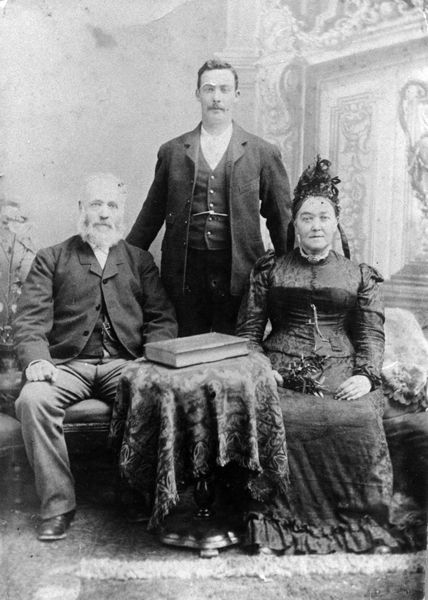
George Heron Place
The cautious, conservative and taciturn George Heron served three terms as mayor, 1889-90, 1893-96, and 1898-99.
Heron was born in Scotland in 1840, and arrived in New Zealand at Nelson in 1863. He settled in Wairarapa in 1868, and worked as a contractor in the outlying areas for some years.
Heron established himself as a corn merchant in 1879 and later opened a grocery. He was involved in a number of town organisations, including the Caledonian Society.
Pic: George Heron with his wife Mary ans his stepson William Watson.
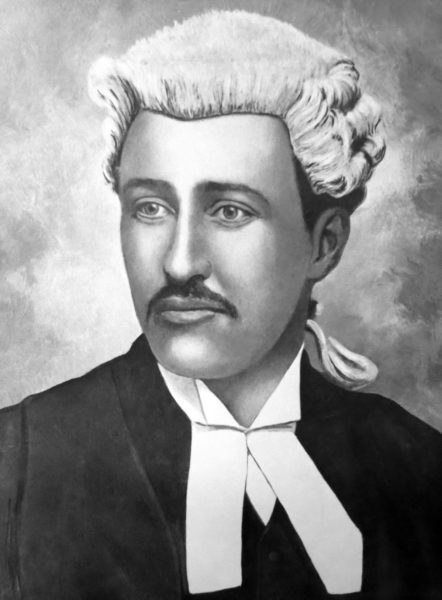
Pownall Street
One of Masterton’s most charismatic mayors, lawyer C.A. Pownall, began his first term as mayor in 1890. The first New Zealander to be Masterton mayor, Pownall had been born in Auckland in 1865 and was only 25 when first elected mayor in 1890. He served from 1890-93, 1896-98, and 1899-1902. He is chiefly remembered as the man who brought a reticulated water supply and better drainage to the Borough. He was also responsible for the Masterton Borough Council accepting responsibility for the Masterton Park, previously administered by a trust.
Pownall was a gifted lawyer, with a national reputation in the licensing and racing fields. He successfully defended Andrew Somerville when he was charged with the 1895 murder of Arthur Herbert outside the Club Hotel in Queen Street.
Pic:
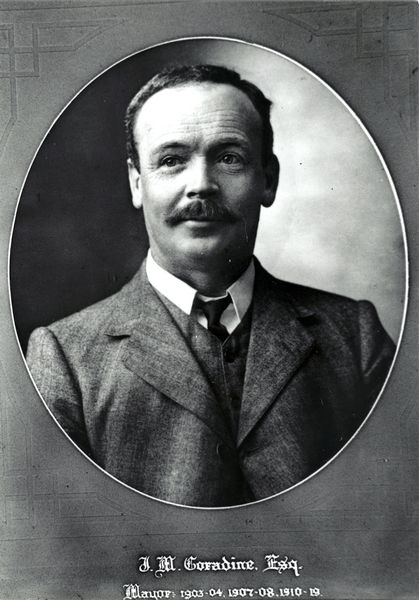
Coradine Street
J.M. Coradine was Masterton mayor for the periods 1903-04, 1907-08, and 1910-19. Coradine was a builder with a keen interest in religion and education. One of many Methodist mayors, Coradine was a partner in a construction business in Queen Street, and built many of the town’s major buildings during the early years of the 19th century. He was a lay preacher in the Methodist Church.
The street named after him has had a variety of names.
It was originally the western end of Perry Street that then ended at Lincoln Road, having taken a left turn at what is currently Coradine Street. There was no road from Perry to Cole Street.
Later, when Perry Street was extended further west to join up with Villa Street, the small branch road from Perry Street to Lincoln Road was called Timothy Street, supposedly after Timothy Kelliher who lived in the area.
Later still, when the street was extended from Lincoln Road to Cole Street the whole street was named after J.M. Coradine.
Pic: J.M. Coradine was one of Masterton;s many Methodist mayors.
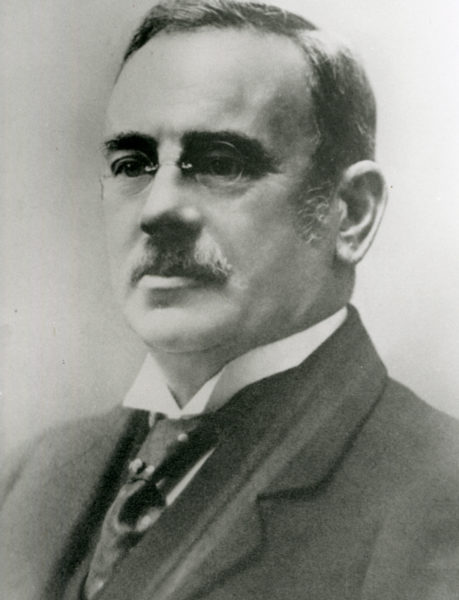
Jackson Street
Joseph Renall served a term as Masterton mayor after J.M. Coradine’s first mayoralty. The long-term Masterton School headmaster W.H. Jackson followed him. Jackson served at the Masterton School for 34 years, and also worked on the Wellington Education Board, the Masterton Trust Lands Trust, and the Secondary Schools Board. He was mayor during the period 1919-1921, and oversaw the peace celebrations following the war.
Jackson Street, a new street connecting Queen and Chapel Streets, was built in 1921, and named “as a compliment to the mayor”.
Pic: W.H. Jackson was a long-term Masterton School headmaster.
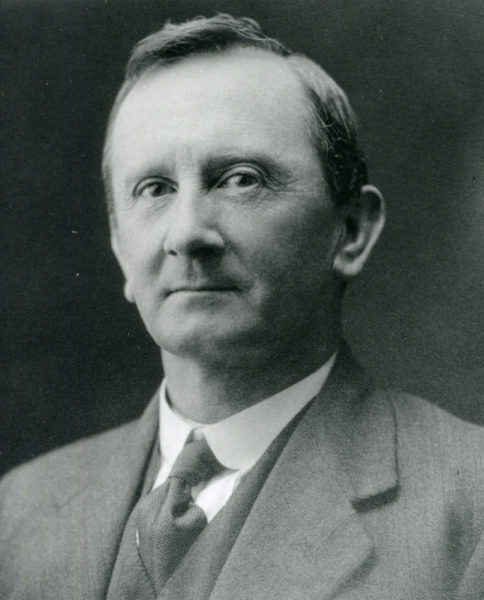
Pragnell Street
Orlando Pragnell was mayor of Masterton from 1921-25. Pragnell was a self-made man, coming to Masterton in the early 1890s with his English parents who established themselves as wood and coal merchants. Pragnell opened a drapery business, but studied law and eventually was able to go into partnership with another mayor, Phillip Rollings. Pragnell left Masterton to practise law in Wellington, then returned to England where he died in 1937 aged 67.
Pic: Orlando Pragnell was a Masterton lawyer, and one of many Methodist mayors.
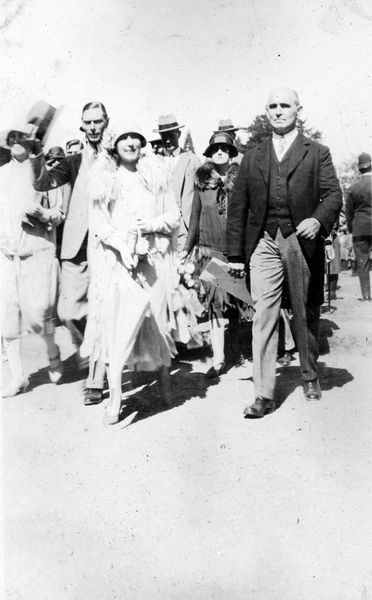
Jordan Terrace
Thomas Jordan, another of Masterton’s lawyer mayors, held office from 1925-44. Jordan, who had served overseas during World War One, was a prominent leader in the town, and in the New Zealand-wide Municipal Association. As a young man he played Ranfurly Shield rugby for Wellington. His death in 1945, shortly after his retirement, was a shock to the town, and the street where he lived, previously called The Terrace, was renamed Jordan Terrace in his honour.
The Terrace was so named because it sat on the terrace above the Waipoua River, looking over the town. In the earliest times William Adams had his house, Mt Pleasant, in the area, and the first track north out of Masterton ran up the terrace in the vicinity of Terrace End.
Pic: Mayor Thomas Jordan escorts the Duke and Duchess of York into Masterton Park.
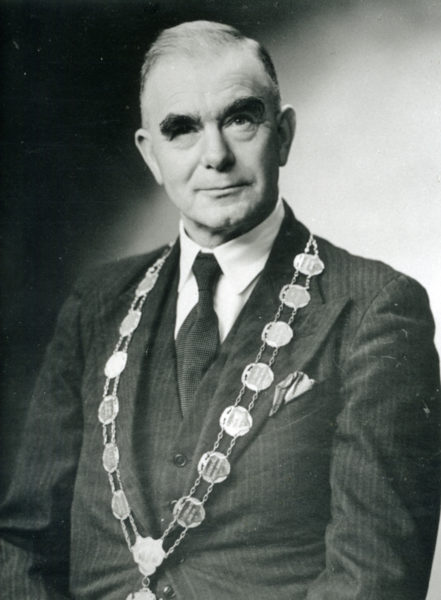
William Kemp Place
The Devonshire born William Kemp, a public minded landscape gardener who served the town on many public bodies, succeeded Jordan, serving as mayor from 1944-53. He arrived in Masterton in 1906, and was first a member of council from 1915-17. Three more spells on council saw him serve a further 17 years before his mayoralty. Kemp died while in office, his term being completed by his deputy, A.R. Keir. He is remembered in William Kemp Place.
Pic: Landscape gardener William Kemp also served as Masterton's mayor.
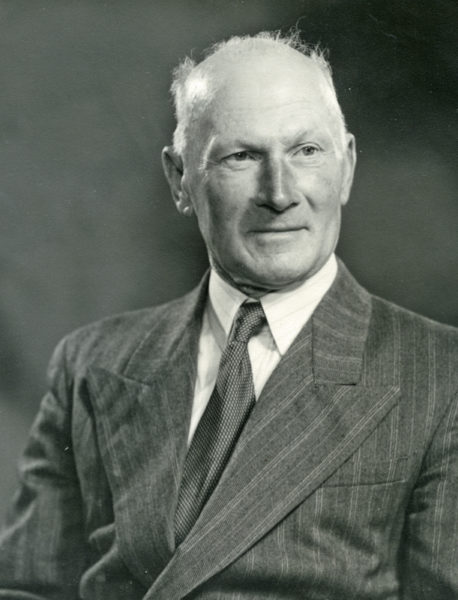
Keir Crescent
A.J. Keir, manager of the local Wairarapa Farmers Cooperative Association garage, completed Kemp’s term as mayor, but lost to Ted Coddington in the 1953 election. The Council proposed to name one of the streets in the Akura Road subdivision of the Papawai and Kaikokirikiri Trust after Mayor Keir, but the Trust wrote asking that their name Herewini (a transliteration of Selwyn) be used instead.
The name of Keir Crescent was used for one of the streets in the Walker block between Totara and Kitchener Streets in 1957.
Pic: A.J. Keir was a short-term Masterton mayor.
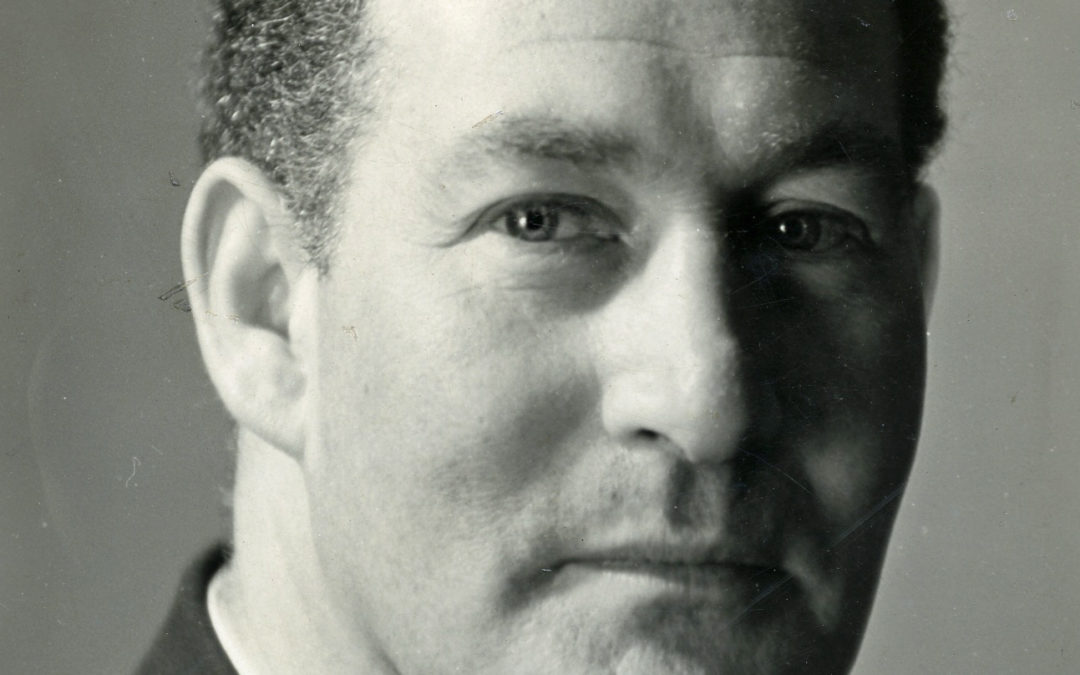
Coddington Crescent
Ted Coddington, who beat A.J. Keir in the 1953 election, was renowned as a good meeting organiser, his years of teaching at Central School no doubt helping him in controlling the rowdy elements on the Council. His ‘call a spade a spade’ attitude also won him friends. Unfortunately he was not to see out his term as mayor, resigning in late 1955 due to ill health brought on by working too hard. Coddington Crescent, formed in 1955, was named after him.
Pic:
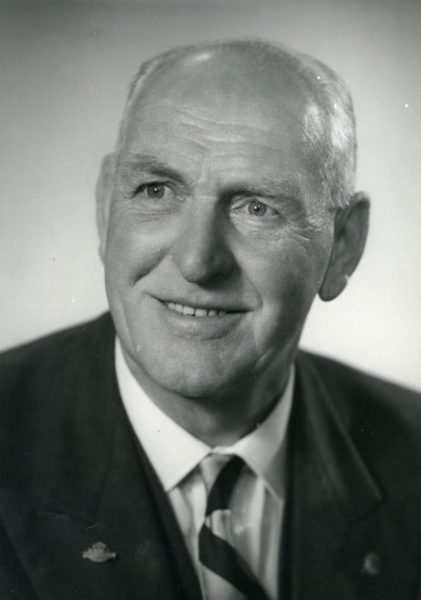
Marchbank Place
Deputy mayor W.L. “Bill” Marchbank was appointed to replace Coddington, and went on to win the next election, serving as mayor from 1955-62. The owner of the Masterton Knitting Mills, Marchbank was to have a strained time at the polls in the election of 1959, when Councillor N.R. Tankersley beat him on election night. After special votes were counted and Tankersley led by three votes, Tankersley was installed as Masterton’s new mayor. Marchbank applied for a magisterial recount, which returned the mayoral chains to him. Marchbank retired at the next election. Marchbank Place is named in his honour.
Pic: Bill; Marchbank served as mayor following Keir's retirement.
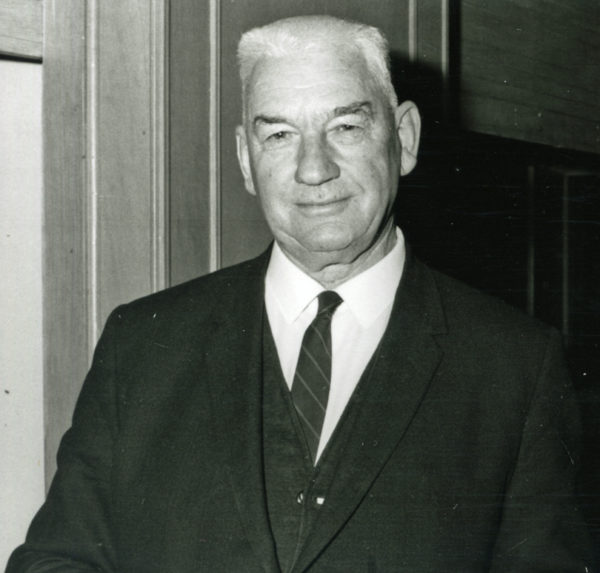
Tankersley Street
N.R. Tankersley, “Norm” to all his constituents, was a descendant of some of Masterton’s first European families. Educated in Masterton he left school to study agriculture. After teaching at Feilding Agricultural High School, Tankersley returned to Masterton and opened a real estate business. In his younger days he was a keen tramper, and always retained an interest in the outdoors. During his long term in office (1962-74) he oversaw a lot of modernisation in the town, and he personally backed many such schemes. He was awarded an MBE for his services to the town. Tankersley Street (originally Tankersley Crescent) in Lansdowne is named after him.
Pic:
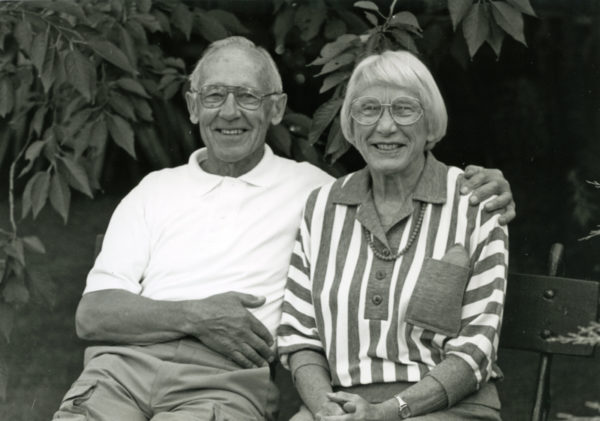
Cody Crescent
Frank Cody was mayor from 1974 until his retirement in 1986. He had been involved in local body politics from 1968, having previously taken leadership roles in the Methodist Church. During the local government restructuring of the late 1980s Cody fought to retain a separate Wairarapa identity but, once Wairarapa was amalgamated with Wellington, successfully sought a seat on the Wellington Regional Council.
In 1994 a new street, running off Tankersley Street, was named Cody Crescent in his honour.
Pic: Frank and Ruth Cody on the 50th anniversary of their wedding.
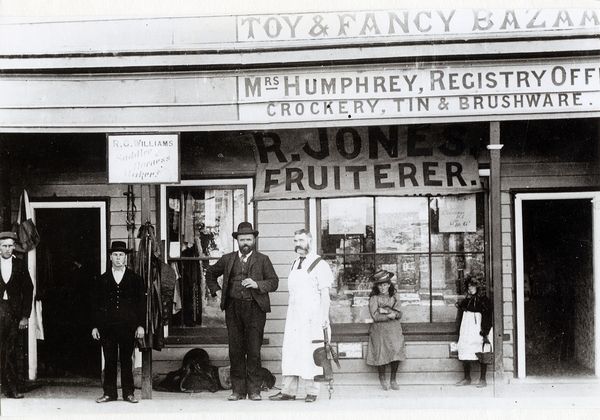
R.G. Williams
Five of MAsterton's mayors do not have streets named after them. Masterton’s first mayor was the local saddler R.G. Williams who was returned unopposed in 1877. Williams was an energetic and charismatic Irishman, said to be the only man in Masterton capable of debating on an equal footing with the equally charismatic A.W. Renall. Williams was a one-term mayor, serving for just one year, and later suffered a series of business setbacks.
Over the years a tradition developed that he had a street named after him, Williams Street, which is now closed but ran from Queen Street to Club Street, just south of Bannister Street.
Close inspection, however, shows this little street to actually be William Street, no doubt named after King William, uncle of Queen Victoria. R.G. Williams has no streets named after him in Masterton
Pic: Masterton's first mayor Robert Williams outside his Queen Street shop.
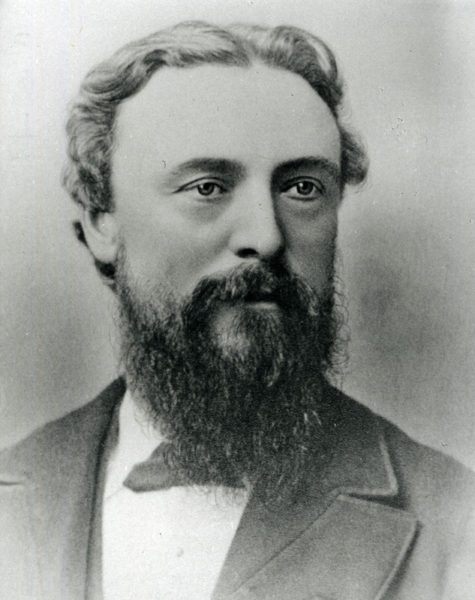
Alfred Bish
Masterton’s fifth mayor Alfred Bish is also forgotten so far as streets go. Bish was a jeweller in Masterton when elected mayor in 1881. He served the town until 1883. He was involved in other public bodies in the town, but sold up and shifted to Carterton. He also served a term on the Carterton Borough Council, and unsuccessfully sought the mayoralty of the southern town. He died in 1918.
Pic: Alfred Bish served as Masterton mayor. then shifted to Carterton.
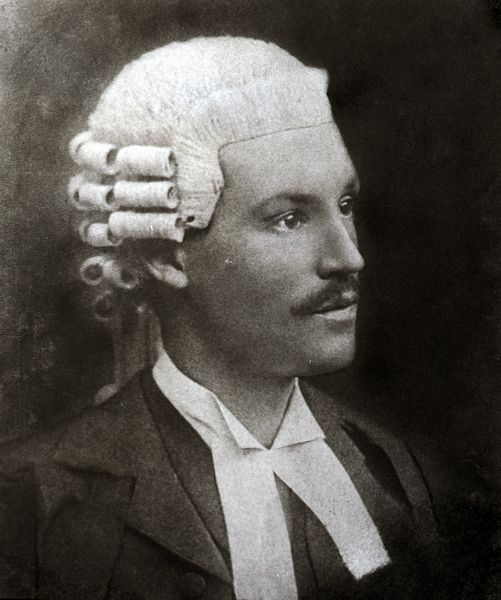
P.L. Hollings
Phillip Luscombe Hollings succeeded fellow lawyer C.A. Pownall into office in 1902.
Hollings was born in London in 1871, and came to New Zealand in 1893 where he worked in the Masterton office of A.R. Bunny. As soon as he qualified he started in business on his own account, eventually being joined by another Masterton mayor, O.N.C. Pragnell.
Hollings served as mayor twice, from 1902-03 and 1908-10. In 1914 he sold his share in the legal practice and shifted to Blenheim where he served as a magistrate. He later returned to practising law and wrote a respected book on commercial law. He died in Wellington in 1931.
Pic: Lawyer, then magistrate, Philip Hollings was also Masterton mayor.
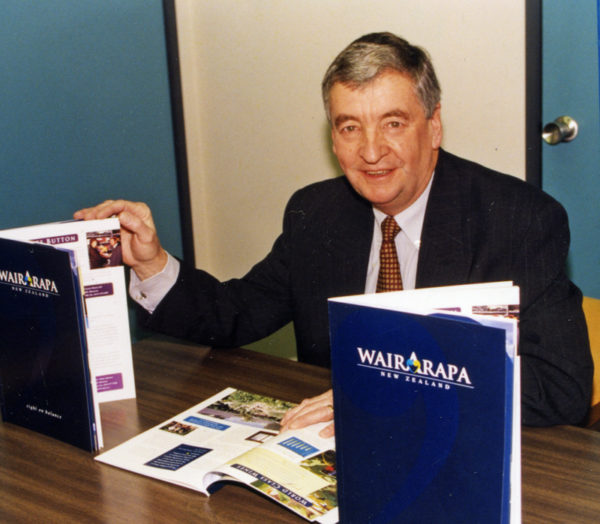
Bob Francis
Masterton’s longest serving mayor, and the man who oversaw the unification of the Masterton Borough and County Councils, has no street named after him.. His 21 years of service to the district, his many years of service in other public roles. and his international rugby refereeing career have been highlights in Bob Francis’ public life. A small private road in the Kibblwhite Road area is named after him.
Pic: Bob Francis, Masterton's longest serving mayor.
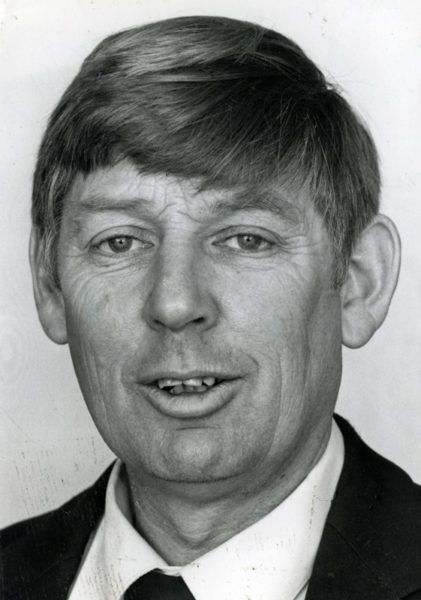
Garry Daniell
Garry Daniell served as mayor of Masterton from 2007 until 2013. A Masterton businessman, Daniell had a keen interest in the economic development of the town, and the retention of the districts heritage was a high priority. His great-grandfather’s name is remembered in Daniell Street, so any street named in his honour will need to be named binomially.
Pic: Garry Daniell was one of the founders of the Mitre 10 organisation.
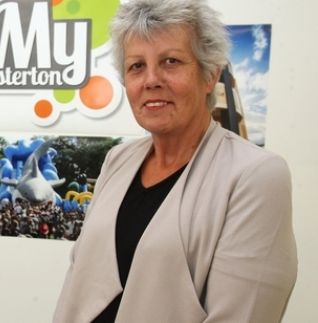
Lyn Patterson
First elected in 2013, Lyn Patterson was returned unopposed in the 2016 elections. She has proven to be a popular mayor and successful advocate for all sections of the community.
Pic: Lyn Patterson was returned unopposed in 2016.























